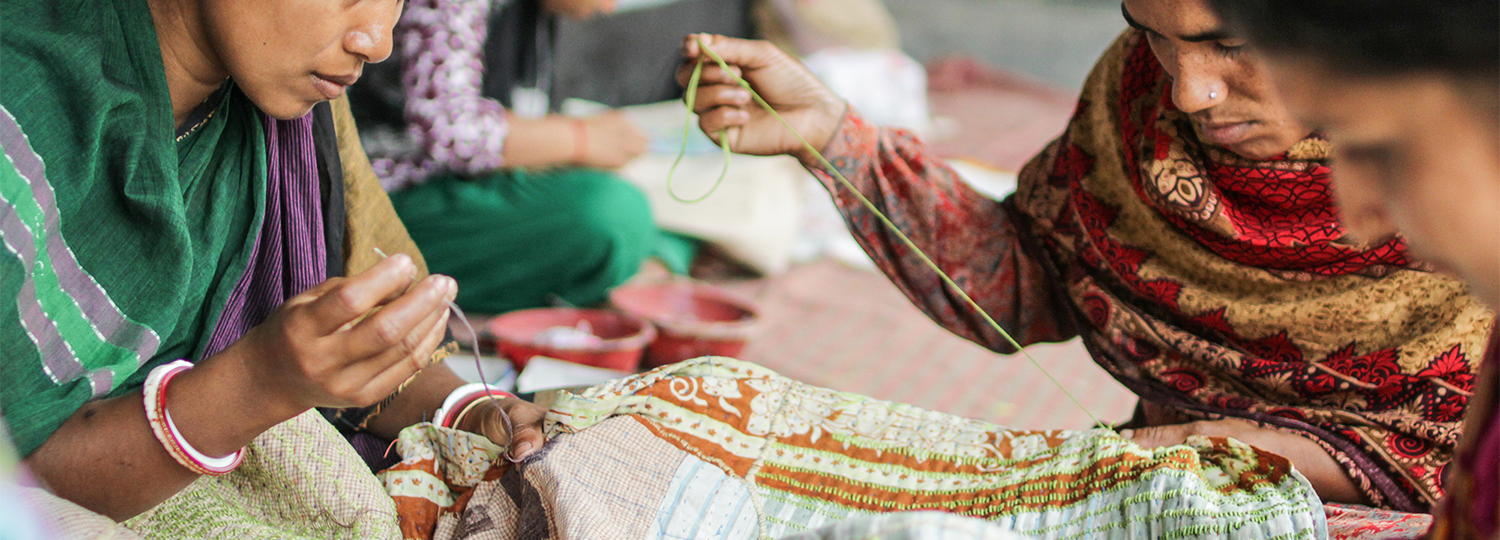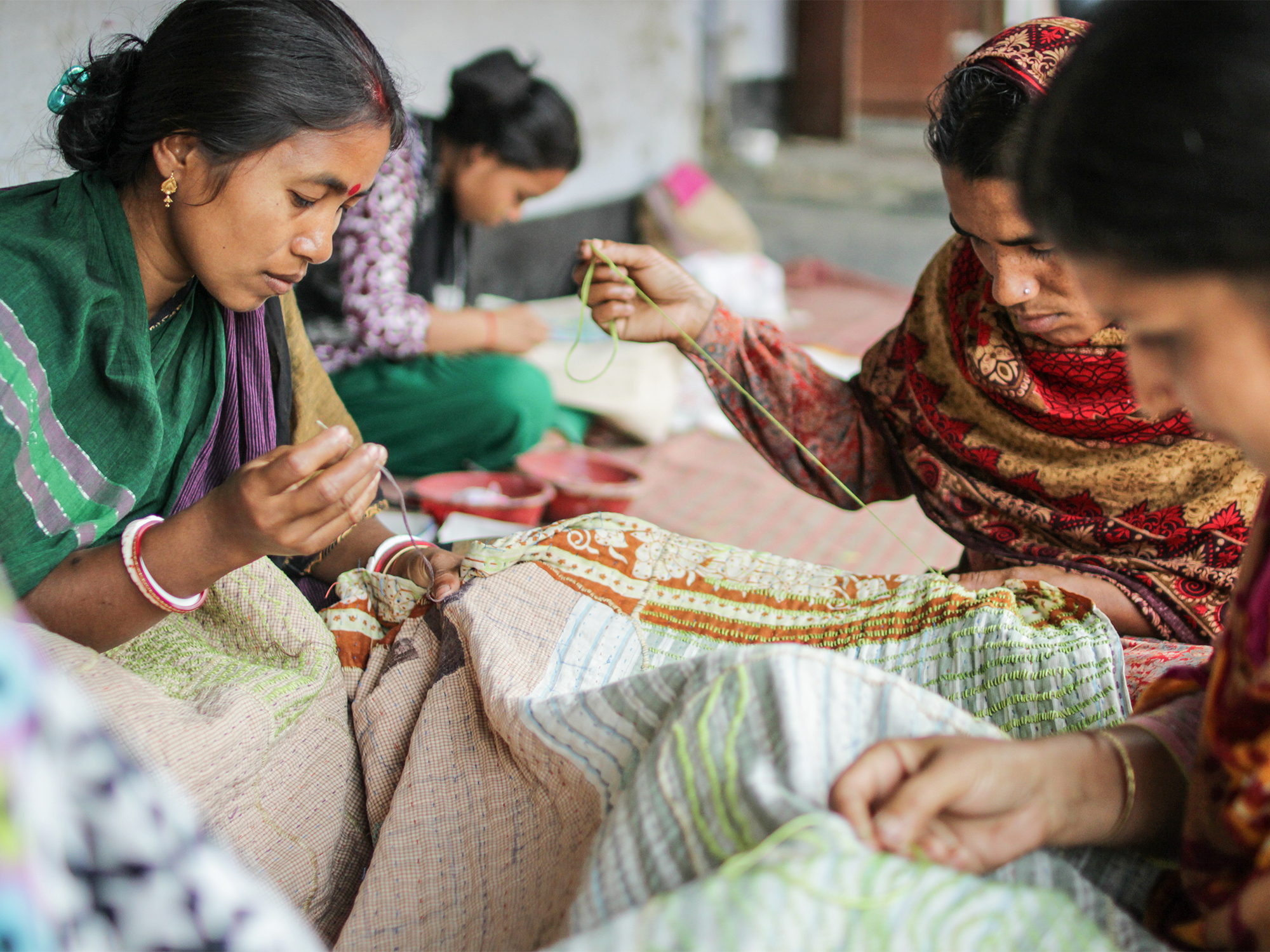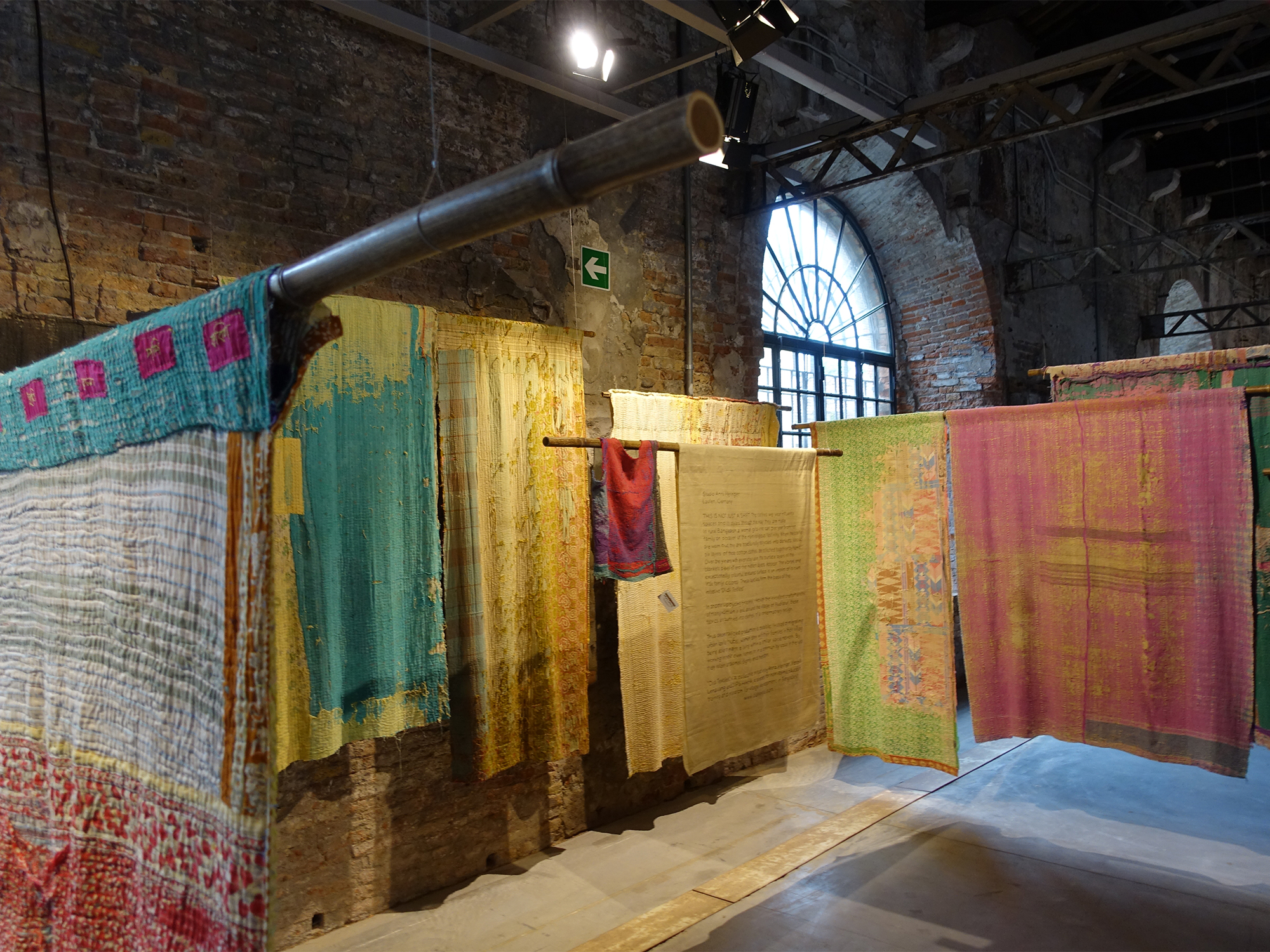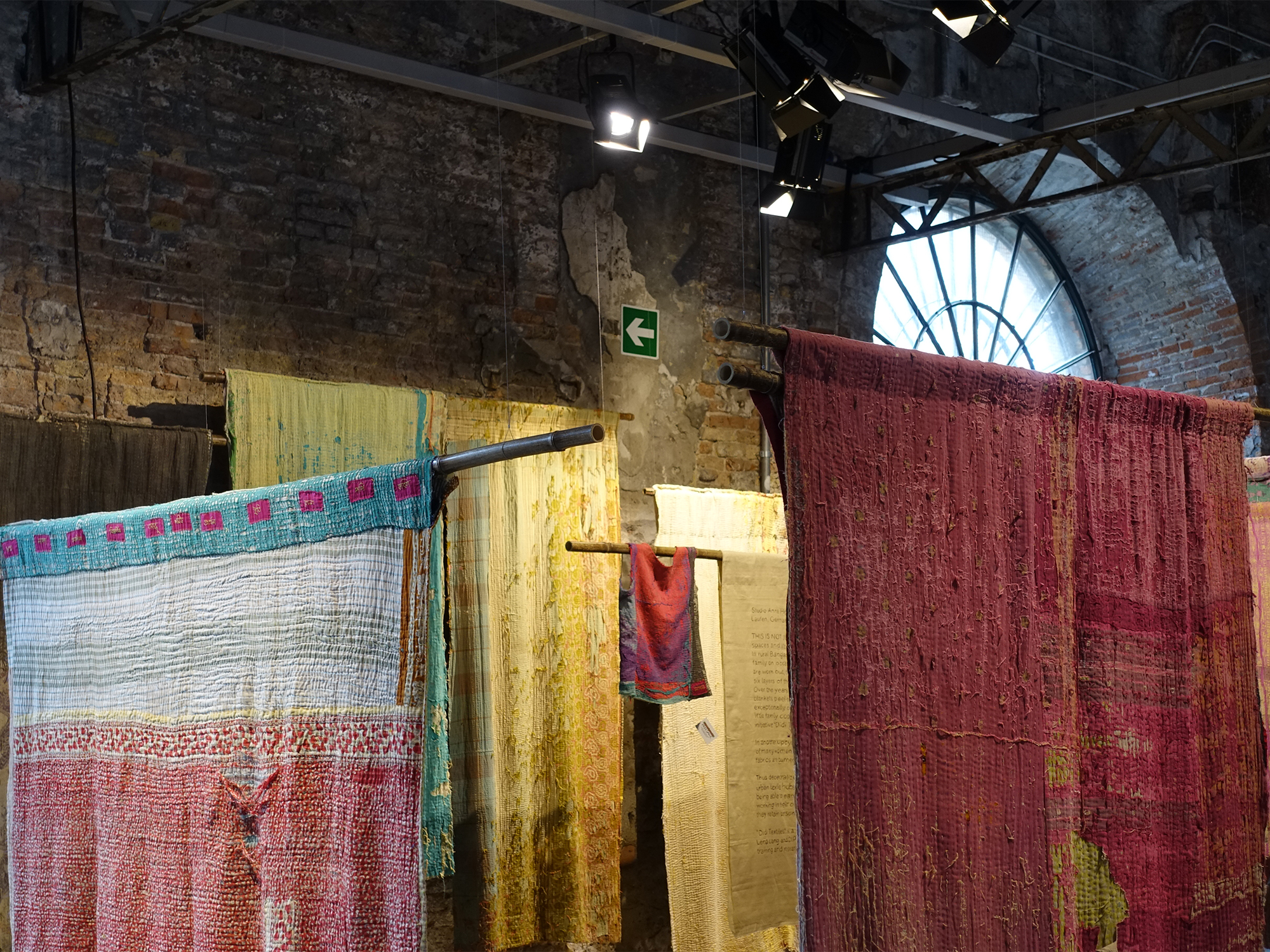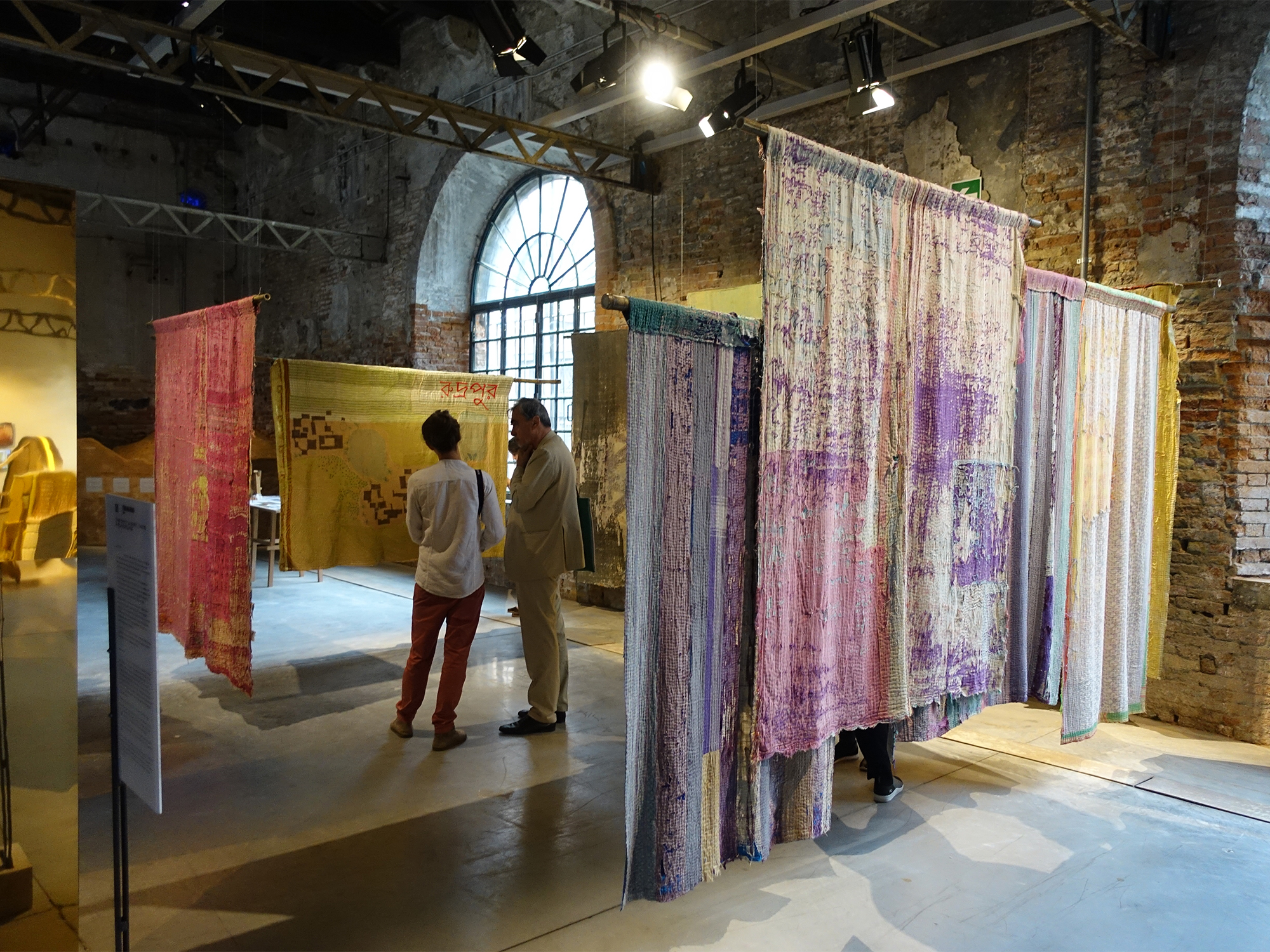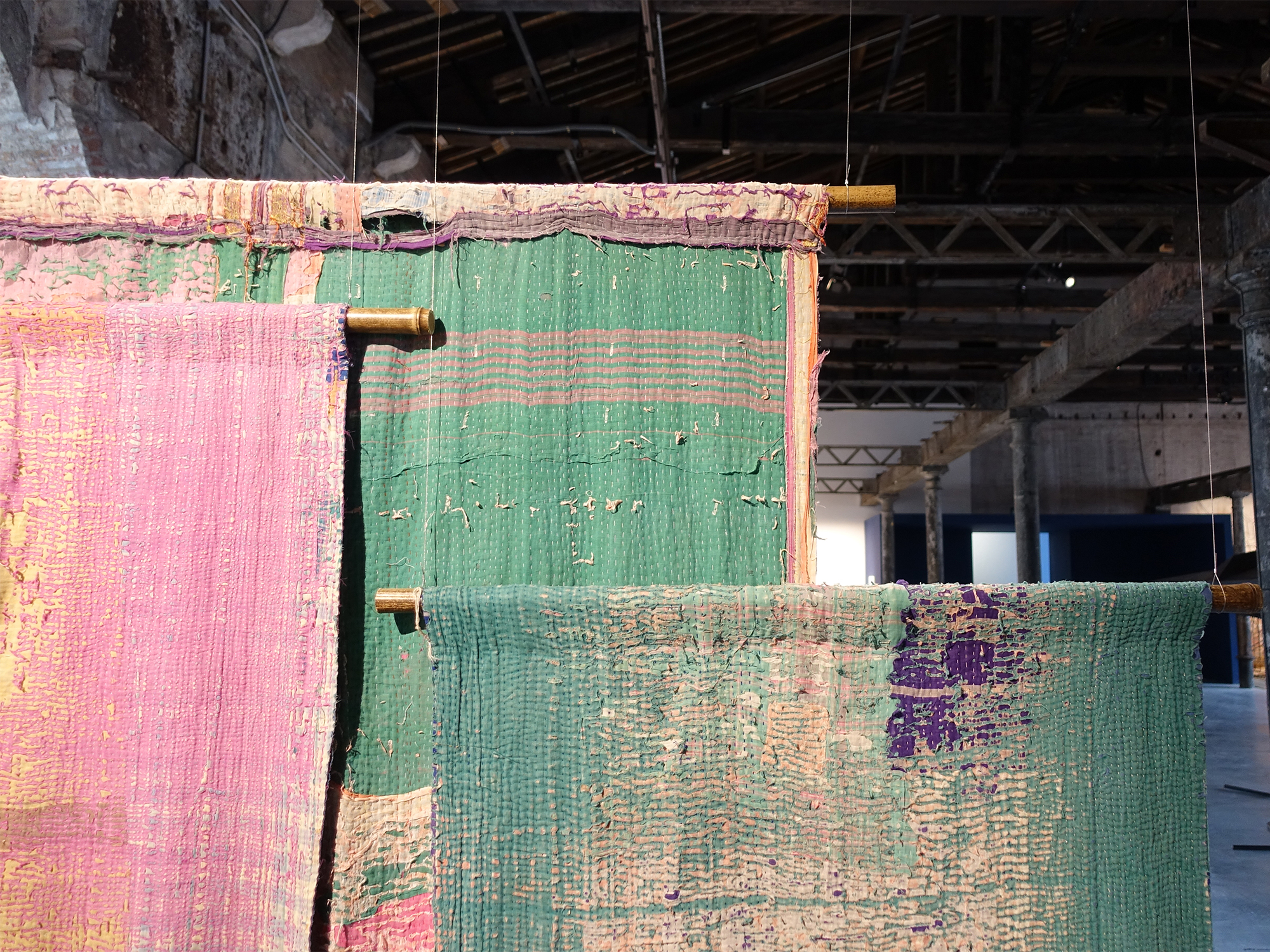Not a Shirt but a Freespace

Foto: Frank Kaltenbach
"Of course, it's a great honour to be invited to the Biennale. But it also means a lot of time and money, which small offices can barely afford. That's why I wanted our efforts to at least benefit others, and decided to use the international attention to present our NGO, Didi Textiles, to a large audience."
With her strong Bavarian accent, Anna Heringer reveals her origins in the small village of Laufen, located close to the Austrian border near Salzburg. Not only does she value its simple, everyday life for herself, she also tries to support others in their daily existence in developing rural regions.
Heringer wears a sleeveless T-shirt by Didi Textiles; another one is mounted high up on a bamboo rod. But Heringer emphasizes that "It’s not a shirt – it’s a freespace!" The fabric from which Didi Textiles shirts, dresses, bags and pillows are sewn is sourced from old saris and blankets, which are then cleaned and transformed by women in Rudrapur, Bangladesh. Not only is each shirt an individual work of sustainable design for the customer, it also represents a small freespace for the seamstresses in the textile industry. In Asia, this is usually characterised by inhumane working conditions; here, on the other hand, they can sew independently in the company of their children and elderly family members.
With her strong Bavarian accent, Anna Heringer reveals her origins in the small village of Laufen, located close to the Austrian border near Salzburg. Not only does she value its simple, everyday life for herself, she also tries to support others in their daily existence in developing rural regions.
Heringer wears a sleeveless T-shirt by Didi Textiles; another one is mounted high up on a bamboo rod. But Heringer emphasizes that "It’s not a shirt – it’s a freespace!" The fabric from which Didi Textiles shirts, dresses, bags and pillows are sewn is sourced from old saris and blankets, which are then cleaned and transformed by women in Rudrapur, Bangladesh. Not only is each shirt an individual work of sustainable design for the customer, it also represents a small freespace for the seamstresses in the textile industry. In Asia, this is usually characterised by inhumane working conditions; here, on the other hand, they can sew independently in the company of their children and elderly family members.
Since the last Architecture Biennale at the latest, the award-winning German architect has been one of the best-known representatives of a socially committed, globally active architectural scene. Heringer's buildings are composed of natural materials such as clay and bamboo, involve the participation of the local population, optimise local typologies and provide a high level of comfort through climate-friendly construction without the need for advanced technology.
Today, her sensual, atmospheric architecture is also in demand by high-tech companies in the developed world. In 2016, Heringer collaborated with Martin Rauch from LehmTonErde, a specialist in rammed earth building techniques, to create clay-walled relaxation niches in the new headquarters of Omicron, a measuring technology company based in Klaus, Vorarlberg, Austria. Thousands of visitors to the last Biennale were able to experience the cooling and calming effect of such spaces first hand. In the main pavilion in the Giardini, a similar cave-like loam structure was part of the installation presented by Anna Heringer together with Martin Rauch and Andres Lepik, Director of the Architecture Museum of the Technical University in Munich.
For a hostel in Baoxi, China, Anna Heringer devised an ensemble of three circular buildings made of rammed earth, each enclosed within a woven bamboo structure reminiscent of an oversized basket.
But her heart beats especially for the small village of Rudrapur in Bangladesh.
This is where the Berlin-based architect collaborated with earthen architecture expert Eike Roswag on her first building: the Meti School, which was awarded the Aga Khan Prize in 2007. She went on to erect three multifamily homes there, whose two-storey design offers an alternative to the conventional single-storey homes that are increasingly taking up valuable agricultural land due to the country’s population explosion. In September 2018, Anna Heringer will start construction of a centre for people with disabilities in Rudrapur. The facility, which borders on another of Heringer’s creations, the Desi vocational school built in 2008, will include a workshop that teaches tailoring and fair textile production.
